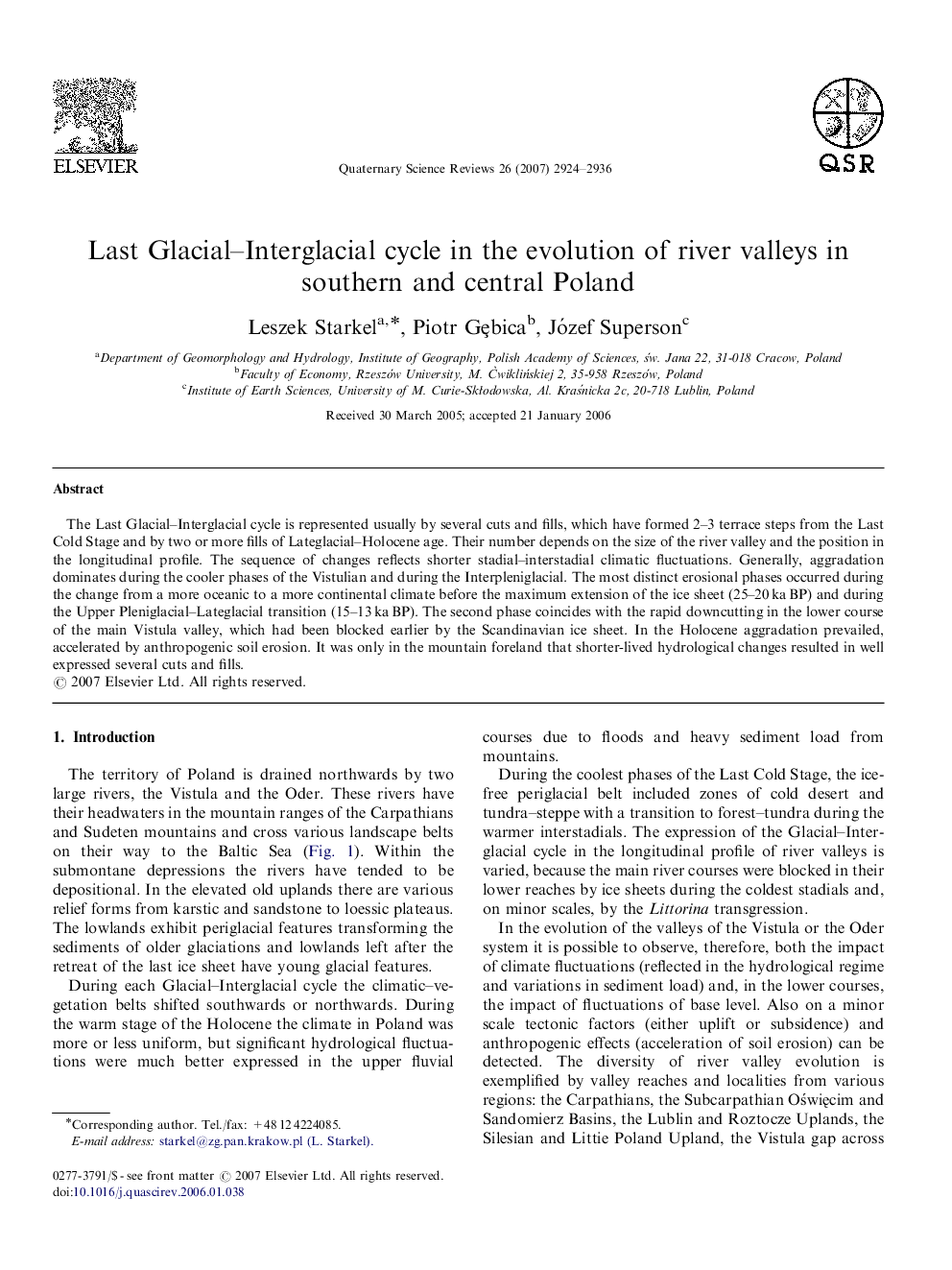| Article ID | Journal | Published Year | Pages | File Type |
|---|---|---|---|---|
| 6446899 | Quaternary Science Reviews | 2007 | 13 Pages |
Abstract
The Last Glacial-Interglacial cycle is represented usually by several cuts and fills, which have formed 2-3 terrace steps from the Last Cold Stage and by two or more fills of Lateglacial-Holocene age. Their number depends on the size of the river valley and the position in the longitudinal profile. The sequence of changes reflects shorter stadial-interstadial climatic fluctuations. Generally, aggradation dominates during the cooler phases of the Vistulian and during the Interpleniglacial. The most distinct erosional phases occurred during the change from a more oceanic to a more continental climate before the maximum extension of the ice sheet (25-20 ka BP) and during the Upper Pleniglacial-Lateglacial transition (15-13 ka BP). The second phase coincides with the rapid downcutting in the lower course of the main Vistula valley, which had been blocked earlier by the Scandinavian ice sheet. In the Holocene aggradation prevailed, accelerated by anthropogenic soil erosion. It was only in the mountain foreland that shorter-lived hydrological changes resulted in well expressed several cuts and fills.
Related Topics
Physical Sciences and Engineering
Earth and Planetary Sciences
Geology
Authors
Leszek Starkel, Piotr Ge¸bica, Józef Superson,
